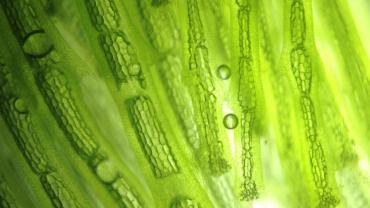
Blood vessel walls contain a protective layer that separates the tissue from circulating blood called the endothelial glycocalyx (EGX). The EGX is a thin gel-like layer that acts as the first line of defense in vessel walls. Every blood vessel is lined with the EGX, which consists of a mesh of glycoproteins, proteoglycans, glycosaminoglycans, and plasma proteins.
Damage to the EGX has been associated in research with aging, smoking, inflammation, and certain dietary changes. During the process of damage to the EGX, increased adhesion to vascular walls and subsequent arterial plaque development and remodeling may occur. Recent research has shown that certain bioactive compounds may help support the structure and function of the EGX.
Rhamnan sulfate (RS) is a sulfated polysaccharide extracted from a unique green seaweed, Monostroma nitidum that has been studied extensively for its potential to support cardiovascular health. It has been shown in laboratory studies to help support certain aspects of the inflammatory response in vascular endothelial cells. A result of vascular endothelial injury may be an increased expression of factors that may lead to hypercoagulation and changes to the rate of fibrinolysis. Laboratory studies indicate that RS may possess some properties to help support normal platelet aggregation to potentially address some endothelial changes that may occur.
A recently published controlled animal study explored the potential efficacy of RS on mice treated with lipopolysaccharide (LPS). LPS in mice removes the vascular EGX and induces the expression of the pro-inflammatory cytokines interleukin (IL)-6, IL-1β, and tumor necrosis factor-alpha (TNF-α). TNF-α has been linked in literature to the degradation of the EGX. Study results indicate that RS administration helped attenuate LPS-induced increases in IL-6 and helped reduce the expression of other pro-inflammatory and thrombus-promoting agents. RS also helped reduce neutrophil infiltration into certain tissues and the expression of certain molecules associated with vascular adhesion including E-selectin and vascular cell adhesion protein-1. Overall study results indicate that RS helped to increase EGX levels in mice and helped protect against LPS-induced damage. More evidence is needed, however, particularly in human studies, but preliminary study results indicate that future research in the clinical setting may be warranted.
In human and animal studies, RS has also demonstrated beneficial effects on lipid and glucose metabolism. RS may also interact with mucosa-associated lymphoid tissue; studies indicate that RS can bind to certain cells located in Peyer’s patches in the small intestine. A clinical study also reported the potential of RS in a supportive role with certain aspects of gastrointestinal health. However, more research is needed before clinical conclusions can be made.
Supporting EGX function may help promote cardiovascular function and healthy aging. Although more evidence is needed, research suggests that certain bioactive molecules such as rhamnan sulfate may help support certain aspects of vascular health.
By Dr. C Ambrose, ND, MAT